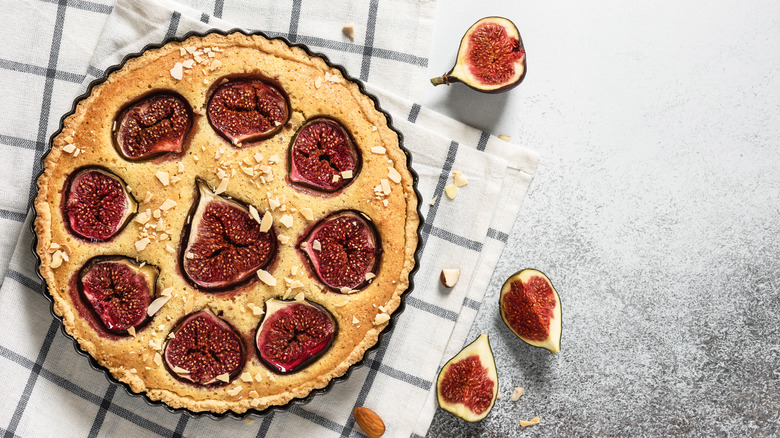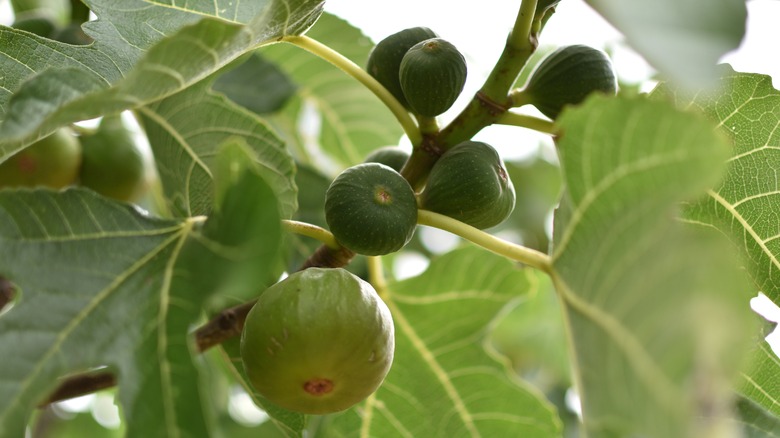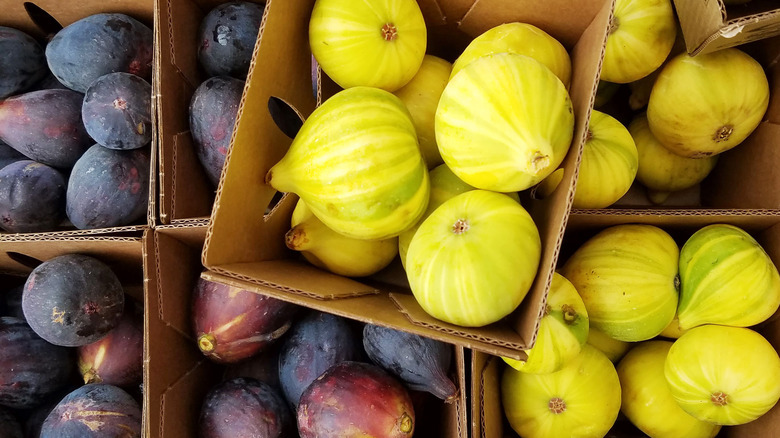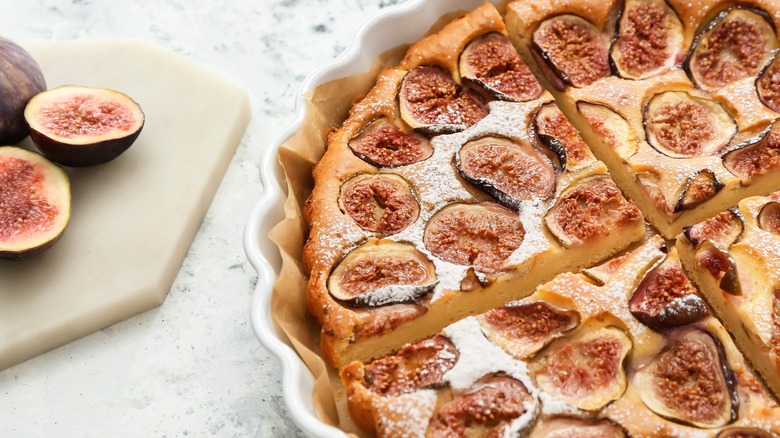Fig Pies Are The Southern Classic You Need In Your Baking Rotation
Similar to a kid in a candy shop, being a pie lover in the Southern part of the United States is a delight of epic proportions. With regional hits like sweet potato pie, pecan pie, and watermelon pie always at your fingertips, there is no shortage of compelling flavors and inventive textures to excite and satisfy a wide range of taste preferences. Only fig pie, however, stands out to Southern natives as the best of the best — and because few know pie better than Southerners, we're inclined to believe them.
If fig pie sounds, to you, more like a sweet Southern pet name rather than an actual dessert, you're not the only one. Made with ripe fresh figs and flavored with notes of lemon, ginger, and butter, fig pie is a well-kept secret known to few outsiders. The pie's lack of notoriety in other parts of the country is not a reflection on its taste, but rather on the availability of the fruit.
Where do fig pies come from?
Because fig trees prefer a tropical climate, you don't often see figs – or fig pies, for that matter — in cooler regions of the country. In states like Louisiana, however, which is home to an abundance of low-maintenance fig trees, the harvest is so bountiful that locals have taken to transforming the fruit into jams, preserves, chutneys and, of course, pies.
Although fresh fig pie is a Southern staple, it also has ties to other parts of the world. Hugely popular in El Salvador, fig pie can be found on the dessert menu at most restaurants throughout the country. Meanwhile, in England, fig pie has long been a popular treat, having been served during Lent and on Mother's Day, for hundreds of years, according to The Foods of England Project. In fact, a recipe for a fig, apple, and pear tart, crafted by the Chief Master-Cook of King Richard II in 1390, suggests that the English have been baking figs into pies for quite some time.
How does fig pie taste?
With fruit that has a jammy texture and whispers of the taste of molasses, it's no wonder figs make such a good pie. While Black Mission figs – delicately sweet, earthy, and slightly bitter — are often used in the making of bread, Calimyrna figs, having a sweet gooey center and a hint of vanilla flavor, are typically used in pies and jams. Combined with lemon juice to balance the sweetness of the fruit, and covered in butter, sugar, and a hint of ginger to brighten things up, once baked, the ingredients combine to form a sweet, custard-like filling.
While the tiny, crunchy seeds that supply figs with their unique texture are certainly part of the appeal for fig lovers — others find them so bizarre that they steer clear of eating figs altogether. Those who find the seeds unappetizing, however, can be soothed by the fact that the seeds become indistinguishable once baked in a pie.
How is fig pie made?
Because fig pies contain beautiful fresh figs, oftentimes it is served as more of an open-faced pie — with just a bottom layer of crust and no top crust – so that the loveliness of the fruit can be on display. However, if you like a more balanced crust-to-filling ratio, a top layer of crust can certainly be added. This can be done using a traditional double crust, or with strips of dough woven on top to create a lattice effect. While using a homemade pie dough can supply that coveted homemade taste and texture, fig pie can just as easily be made using a premade pie crust. If you'd like to skip the baking part altogether, there's even a no-bake fig pie option, reminiscent of an icebox cake, that employs the use of a graham cracker crust, mascarpone filling, and chopped fresh figs.
A slice of fig pie is sure to satisfy without any additional toppings. However, a dusting of powdered sugar for sweetness, a scoop of ice cream, or a dollop of fresh whipped cream can take things to a whole new level. Although fig pie is typically served as a dessert, a sprinkling of goat cheese and crushed walnuts can transform your sweet treat into a fun and inventive appetizer.



